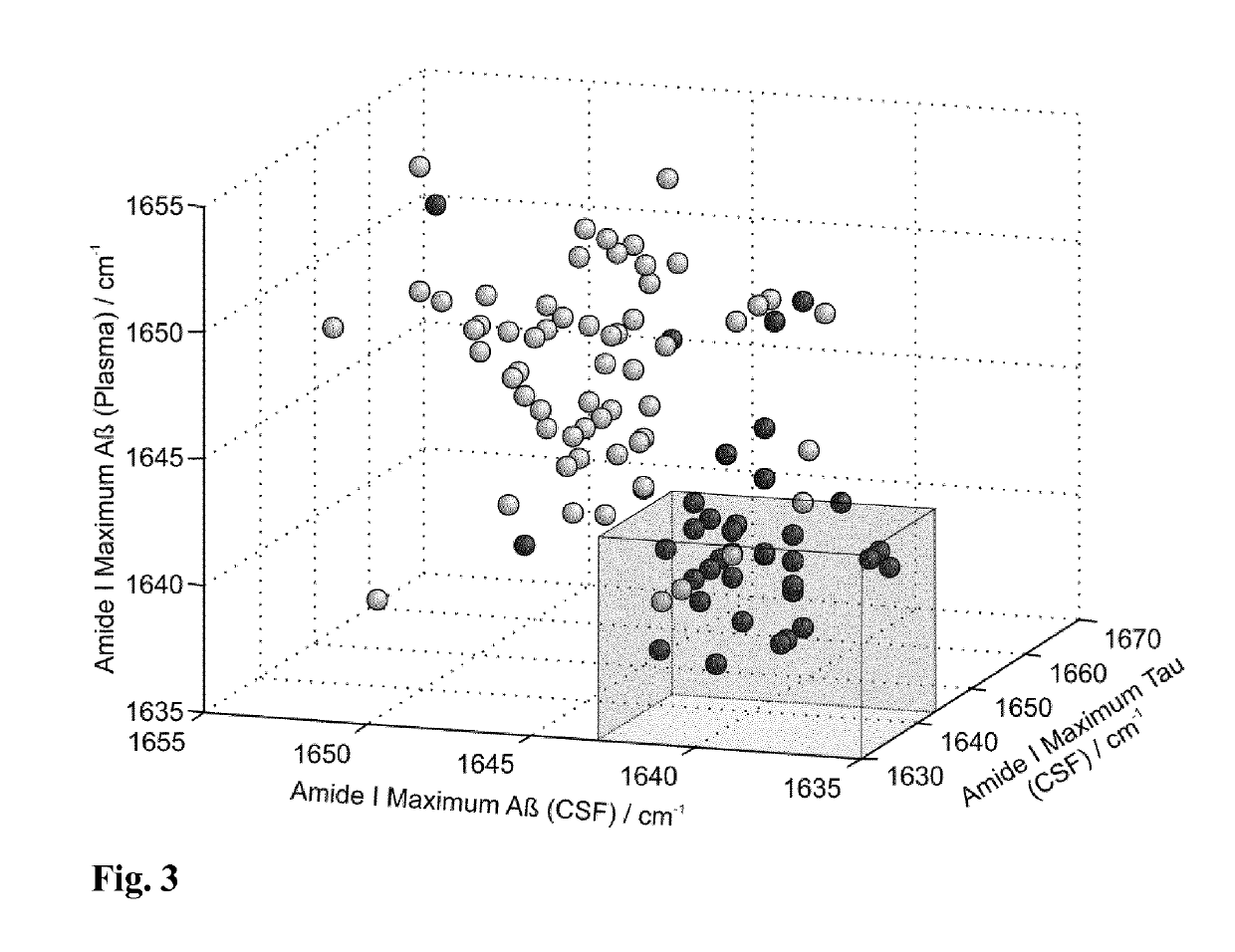Combined assay for the differential diagnosis of the alzheimer's disease
a combined assay and alzheimer's disease technology, applied in the direction of material analysis, biological material analysis, instruments, etc., can solve the problems of differential diagnosis, biomarker quantification, and difficulty in clinical routine for differential diagnosis and sub-classification of ad, especially into early or prodromal stages of diseas
- Summary
- Abstract
- Description
- Claims
- Application Information
AI Technical Summary
Benefits of technology
Problems solved by technology
Method used
Image
Examples
example 1
[0050]The Aβ and Tau protein secondary structure distribution for accurate DC and DAT differentiation.
[0051]The performed study included 300 samples from 61 DC and 39 DAT patients. Details about the patients differential diagnosis were described previously (Nabers et al., Anal. Chem. Doi: 10.1021 / acs.analchem.5b04286 (2016). In general, the patient collective was separated into DCs and DAT subjects. The DAT group was further sub-classified into early, moderate, and severe states of Alzheimer's disease. For a small number of DC patients a complete differential diagnosis was available including patients suffer from dementia not due to Alzheimer's disease origin such as Parkinson disease or vascular dementia. For the analysis of the secondary structure distribution of Aβ and Tau in CSF and / or plasma, both biomarker were extracted from the respective fluid by an immuno-infrared sensor as described by Nabers et al. (Nabers et al., Anal. Chem. Doi: 10.1021 / acs.analchem.5b04286 (2016)). Th...
example 2
[0052]A combined assay for DC and DAT differential diagnostics.
[0053]The combined data analysis provided also the potential to sub classify both diagnostics groups. This is schematically shown in FIG. 5. For instance, Aβ from CSF and plasma demonstrates an amide I maximum above or equal to 1643 cm−1, but the Tau amide I maximum is below 1643 cm−1, in this case another type of dementia might be potentially indicated by the combined immuno-infrared assay (FIG. 5). In contrast, when the amide I maxima of Aβ from CSF and plasma are below the marker band but the Tau maximum is above, an early state of DAT will be displayed. This procedure was applied to both diagnostics groups within our study. The amide I maximum of Aβ from CSF demonstrated in 69% of all DC cases a higher maximum value than Tau from CSF. This effect may be explained by higher disordered properties of the Tau protein as compared to Aβ. On the other hand, in 25% of all DC cases the maximum was lower for Aβ and only in 6% ...
PUM
 Login to View More
Login to View More Abstract
Description
Claims
Application Information
 Login to View More
Login to View More - R&D
- Intellectual Property
- Life Sciences
- Materials
- Tech Scout
- Unparalleled Data Quality
- Higher Quality Content
- 60% Fewer Hallucinations
Browse by: Latest US Patents, China's latest patents, Technical Efficacy Thesaurus, Application Domain, Technology Topic, Popular Technical Reports.
© 2025 PatSnap. All rights reserved.Legal|Privacy policy|Modern Slavery Act Transparency Statement|Sitemap|About US| Contact US: help@patsnap.com



